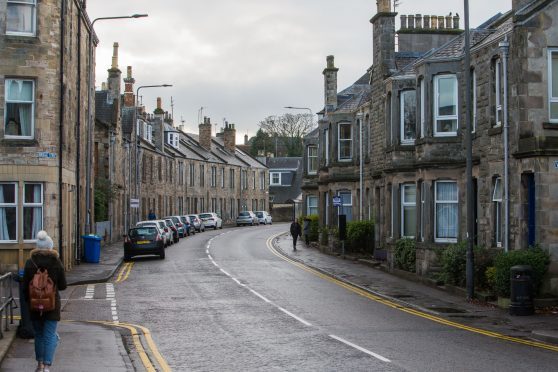A ban on HMOs in its town centre has damaged St Andrews and should have been dealt with sooner, according to a university economist.
Dr Ross Brown accused Fife Council of sticking its head in the sand over the issue of houses of multiple occupation which it tried to tackle by imposing a moratorium six years ago.
According to a report seen by The Courier the policy has put further pressure on house prices and failed to control the growth in number of HMOs, pushing student tenants out into residential areas.
Since the moratorium was applied, prohibiting planning permission for new HMOs in the conservation area, the number of HMOs outside University of St Andrews ownership has risen by 22% to almost 650.
Estate agents reported a rise in demand from buy-to-let landlords for property in outlying residential areas of the town not covered by the moratorium.
Dr Brown, of the university’s school of management, said: “I think the council has taken the old ostrich strategy of putting its head in the sand, hoping it will work out, but it has been quite damaging on the town.
“It has been far too slow in addressing the issue. It said it would look at the impact (of the moratorium) after two years but five years down the line they have only just commissioned this study this year.
“The trends were already showing after two years.”
He branded the partial moratorium “extremely ill-conceived” and said the potential for unintended consequences were flagged up at the outset.
Dr Brown, who recently published his own assessment of the town’s HMO situation, has recommended a town-wide moratorium, rejecting a suggestion by some that it be flipped to permit new HMOs in the town centre only.
Recommendations in the council’s report, conducted independently by consultant North Star, have been redacted in the version seen by The Courier. The report was completed in April but it will be January before it is presented to councillors.
Dr Brown said: “Redacting the conclusions is a bit sad and quite Machiavellian. This is the crux of the matter.
“However, I can’t see how they can have come to any other conclusion than one similar to my own, which is that the situation with HMOs has got out of hand and needs to be thought through and properly regulated.”
The university has recently sanctioned investment of £70 million to provide 900 new places in halls of residence and is developing a 64-bed affordable housing scheme for staff and postgraduate students.
In 2014 Fife Council said there was a lack of empirical evidence on the affected the moratorium and continued it until 2016.
Housing manager Helen Wilkie said: “In January we’ll be holding a workshop with councillors to look at the consultants’ findings and explore options for the future.
“This was the earliest opportunity to hold this event allowing time for further discussions and the planning programme.
“We hope to report to committee with proposals as early as February.”






